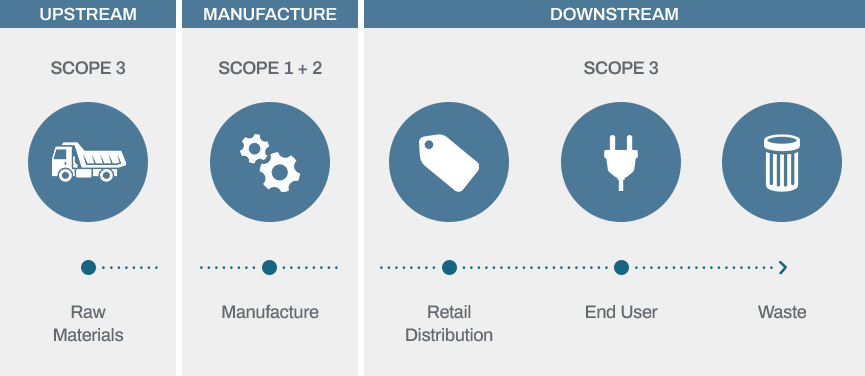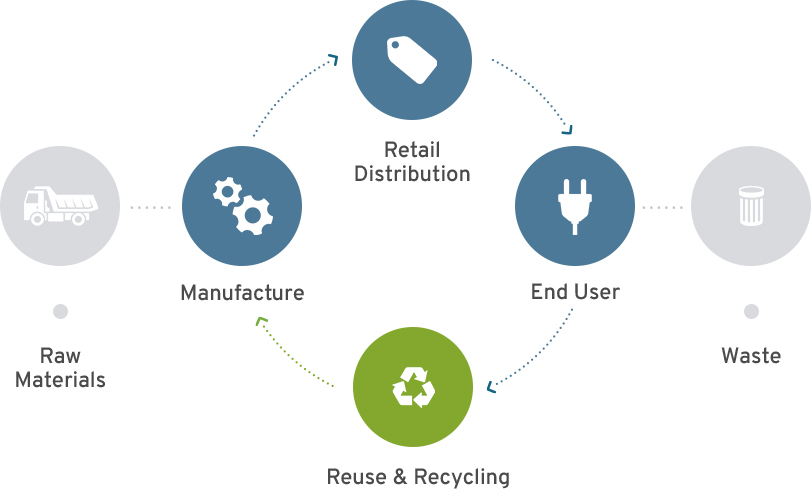Value Recovery Redefined When Retiring IT Equipment
By Sean Magann, Sims Lifecycle Services
Until recently, financial returns and data destruction were primary outcomes of successful IT asset disposition (ITAD) programs. However, changes in IT infrastructure, end-user equipment, and increased interest in asset reuse and closed-loop recycling allow us to reimagine how we handle used IT equipment. These changes give us a unique opportunity to improve how we manage used electronics using data-driven information to manage the lifecycle of IT assets.
A LOOK BACK
The electronic recycling industry has evolved and matured since it emerged in the 1990s. At that time, most companies sold used equipment to small local recyclers, who disposed of e-waste with few questions asked. This inevitably led to carelessness in dealing with the data on these assets, and little regard for environmentally responsible disposal. As computers became ubiquitous in households and businesses, the possibility of data leaks on retired IT assets became better understood. Ensuring effective data management and erasure became critical, as did documentation confirming that equipment was disposed of in an environmentally responsible manner.
Recently, with awareness growing around corporate compliance to data security and environmental laws and regulations, companies have developed defined ITAD programs to remove IT assets from their live environment and responsibly dispose of the equipment. Typically a company’s disposition program is managed by trusted ITAD vendors, who ensure environmentally responsible and data secure handling, supported by documentation. Data is destroyed and IT assets are sold through structured programs or they are responsibly recycled. And, in addition to financial returns and data security considerations, companies are also reimagining the equipment disposal landscape through the lens of sustainability.
REIMAGINING IT ASSET LIFECYCLES
Today, the entire IT infrastructure ecosystem is in flux. On-premise data centers are being shut down as processing moves to the cloud. Most software applications are or will be cloud-based, as opposed to traditional desktop or client-server versions. Mobile devices have become powerful go-to computing devices. Over the next five years, 5G roll-out will fundamentally change the computing landscape. At the same time, everything from our appliances to our vehicles is becoming “smart” digitized electronics.
This infrastructure, including the transition to cloud processing and storage, changes the technology needs of end-users. For years power, processing, and storage capacity were critical to keeping up with improved software capabilities. Today we are at the tipping point. End-user equipment no longer needs to be as frequently upgraded to keep up with increasing software demands. This creates the opportunity for computer manufacturers and businesses to reimagine both end-user equipment design requirements and how equipment is managed during its useful life.
Designing and manufacturing durable and recyclable equipment unlocks previously unavailable sustainability gains. This also represents a shift in the services an ITAD provider can provide, with reuse solutions diverting older equipment from recycling. Three to four-year lifecycle upgrades can be extended to six years and more. When this equipment is replaced, it can still be reliably redeployed within your organization. A laptop originally used by a designer or programmer can be reassigned to a user managing smaller files or performing less complex tasks. It can also be refurbished and resold through e-commerce channels and sold for home use. Extending the lifecycles for networking and data center equipment can follow the same logic. When equipment has outlived its original purpose, extending its lifecycle by placing it in less demanding environments is preferred.
YOU CAN'T MANAGE WHAT YOU DON'T MEASURE
Information helps companies make better decisions regarding the timing of hardware purchases, utilization of equipment, and how equipment is transitioned to be repurposed. Today, in addition to financial calculations, companies are seeking ways to measure the overall environmental impact of owning and using IT equipment. Companies most often use carbon emissions, or greenhouse gas emissions, as the baseline measurement for environmental impact.
MEASURING ALL CARBON EMMISIONS
HOW IT ASSET REUSE AND RECYCLING FITS WITHIN A COMPANY'S OVERALL SUSTAINABILITY GOALS
Information helps companies make better decisions regarding the timing of hardware purchases, utilization of equipment, and how equipment is transitioned to be repurposed. Today, in addition to financial calculations, companies are seeking ways to measure the overall environmental impact of owning and using IT equipment. Companies most often use carbon emissions, or greenhouse gas emissions, as the baseline measurement for environmental impact.
The Greenhouse Gas Protocol Corporate Accounting and Reporting Standard (Greenhouse Gas Protocol Standard), introduced in 2001, is a framework that enables companies to holistically evaluate their carbon impact. This standard was developed by World Business Council for Sustainable Development (WBCSD) and World Resources Institute (WRI) and categorizes direct and indirect greenhouse gas (carbon) emissions.
The protocol defines greenhouse gas emissions as Scope 1, Scope 2, and Scope 3. Scope 1 emissions are direct carbon emissions resulting from the company’s operations. Scope 2 emissions result from energy purchased to support the company’s operations. Scope 3 emissions are indirect emissions that are produced to support the company’s operations. These may be upstream or downstream activities, such as external goods and services purchased, leased assets, and transportation activities to deliver goods to the company. Downstream activities include the distribution, consumption, and disposal of a company’s products.
LINEAR MATERIAL MODEL (Use and Dispose Model)
Traditional supply chains or production models show how materials are mined to serve as raw material inputs for the manufacturing of IT equipment. Once manufactured, a product is distributed through retail channels, purchased and used by end-users, and disposed of as waste at the end of their useful life. Applied to the Linear Material Model, Scope 1, 2, and 3 emissions are shown in the diagram below. Scope 3 emissions can be the most difficult for a company to measure.

MEASURING CARBON IMPACT OF RETIRED IT ASSETS
The traditional linear material model has transitioned to a circular model, where reuse and recycling are prioritized over landfilling used IT assets. By reusing equipment, the carbon footprint of producing a new laptop, desktop, server, or other equipment is avoided. Reuse and recycling reduce the depletion of finite raw material resources and the volume of waste that is landfilled. Recycled material becomes an alternative to virgin raw material. Carbon emissions associated with the reuse and repair processes will be significantly less than those produced by manufacturing new equipment.

SUSTAINABILITY CALCULATORS FOR IT ASSET REUSE AND RECYCLING
Increasingly, companies are including how used IT assets are repurposed or disposed of in their sustainability reporting, primarily by demonstrating carbon reduction. A Google search for “sustainability calculators for IT assets” provides examples of the different tools available in the marketplace. Each of these calculators uses different methods to calculate Scope 3 emissions. To decide which calculator best serves a specific need:
- Ask what type of equipment is included in the calculator’s logic. This will help in selecting a calculator that represents the specific infrastructure profile for a given company.
- Determine how often the calculator is updated. To keep up with technological advances, the calculator will need to be regularly updated.
- Find a calculator that quantifies carbon savings from the reuse and recycling of IT assets. Reuse always results in better sustainability gains compared to recycling.
Additionally, there are significant energy savings when using recycled plastic, copper, steel, and aluminum when manufacturing new IT assets. According to ISRI Fact Sheet, the energy saved when recycling materials is:
- Up to 95% for aluminum
- Up to 88% for plastic
- Up to 75% for copper
- Up to 60% for steel
The ability to quantify your carbon impact enables you to:
- Make smarter decisions about managing IT assets
- Achieve higher utilization per device
- Improve value recovery
- Measure and improve sustainability achievements
- Manage your equipment responsibly
- Make choices that are right for value recovery and sustainability
 Sean Magann
Sean MagannSean Magann, Sims Lifecycle Services’
Chief Commercial Officer, is one of the
world’s thought leaders on all aspects
of managing the lifecycle of enterprise
IT and data center equipment. With more
than 20 years of industry experience
coupled with developing and executing the geographic
expansion of facilities in international markets, Mr.
Magann has developed a complementary background
for helping global fortune 500 companies manage
successful IT asset disposition and cloud recycling
programs.